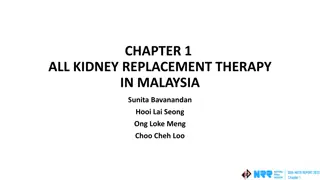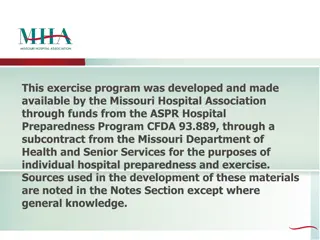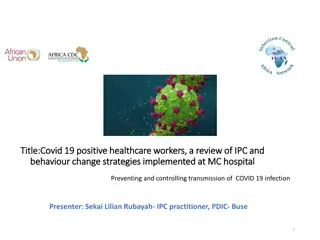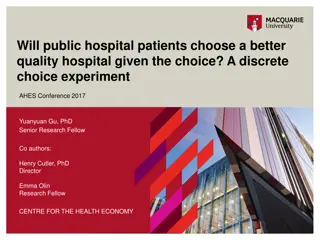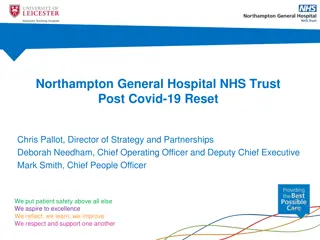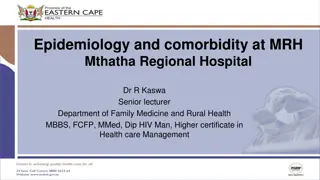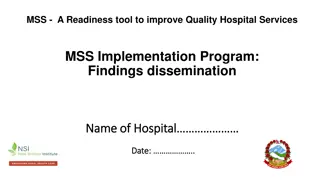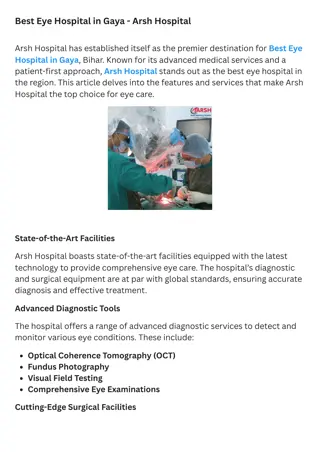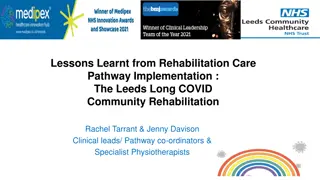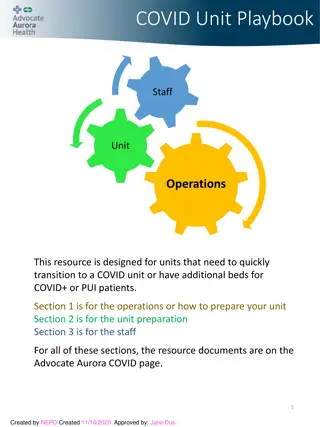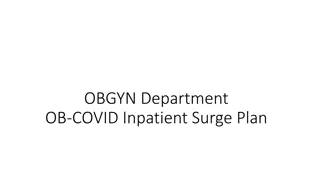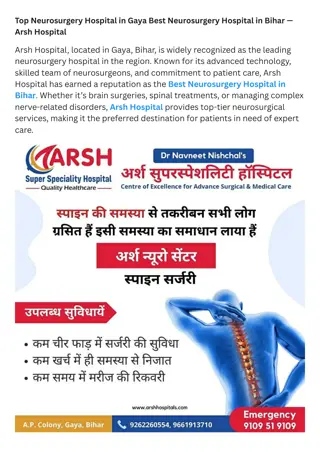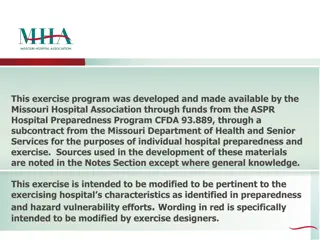Economic Impact of Hospital at Home Program for COVID-19 Patients
This study evaluated the economic impact of a Hospital at Home program compared to usual hospital care for COVID-19 patients. Results showed that patients in the HAH group had lower total costs of care, reduced inpatient length of stay, and lower readmission rates, indicating the potential benefits of such a program in the pandemic scenario.
Uploaded on Oct 06, 2024 | 3 Views
Download Presentation

Please find below an Image/Link to download the presentation.
The content on the website is provided AS IS for your information and personal use only. It may not be sold, licensed, or shared on other websites without obtaining consent from the author.If you encounter any issues during the download, it is possible that the publisher has removed the file from their server.
You are allowed to download the files provided on this website for personal or commercial use, subject to the condition that they are used lawfully. All files are the property of their respective owners.
The content on the website is provided AS IS for your information and personal use only. It may not be sold, licensed, or shared on other websites without obtaining consent from the author.
E N D
Presentation Transcript
The Economic Impact of a Hospital at Home in a COVID19 Pandemic Thad Wilkins, MD, MBA1; David Walsh, MD2; Christy Ledford, PhD1; Stephen Looney, PhD3; Stephen Shiver, MD4; Matthew Lyon, MD4; Megan Furno, MPH5 1 - Department of Medicine, Division of Hospital Medicine, Medical College of Georgia at Augusta University 2 - Department of Family Medicine, Medical College of Georgia at Augusta University 3 - Department of Biostatistics and Data Science, Medical College of Georgia at Augusta University 4 - Department of Emergency Medicine, Medical College of Georgia at Augusta University 5 - Operational Excellence, Augusta University Medical Center This research was funded by a grant from the Curtis G. Hames Research Grants Program (MCGFD01044)
The Research Question What is the economic impact of a Hospital at Home (HAH) program in COVID19 patients?
Research Design and Method Objective: To evaluate the economic impact of HAH versus usual hospital care for patients requiring admission for COVID19 Study Design: Matched case-control retrospective study (100 HAH and 100 control) Setting: Academic medical center Population studied: Patients admitted with COVID19 and, subsequently enrolled into the HAH program. Patients age <18 were excluded from consideration for enrollment. A Case-control sample was matched on age, gender, and severity of illness. 200 patients were included Outcome Measures: Inpatient length of stay (iLOS), rate of 30-day readmissions, fixed, variable, and total costs
What the Research Found This retrospective analysis included 200 patients (mean age 50.4, SD 14.2) Most patients (55%) were female, 48.5% were African American, 43.5% were white, and 8% were other races There was no significant difference in 30-day readmissions (11% vs. 14%, p = 0.670). For HAH patients, the total LOS = iLOS (5.7 days) + Home LOS (7.2 days) = 12.9 days HAH Cohort 5.7 Control Cohort 9.4 p-value Inpatient LOS (days) 0.055 Total LOS (days) 12.9 9.4 0.015
What the Research Found HAH Cohort $675,668 Control Cohort $1,439,719 p-value Inpatient fixed costs 0.019 Inpatient variable costs $593,277 $1,495,887 0.011 Inpatient total costs $1,268,944 $2,935,601 0.013 The HAH group had an additional at home cost of $536,250 (715 days at $750 per day) representing a lower total cost of care ($1,805,194 vs $2,935,601)
What this means for Clinical Practice Our findings support a favorable economic impact of implementing a HAH program ($1.1 million) There are many advantages of a HAH program during a pandemic including decreasing nosocomial spread and reducing the strain on inpatient capacity A major potential advantage of HAH programs is reducing healthcare spending by reducing the cost of care, but the true effect depends on how the program is implemented and other factors, e.g., rates of readmissions
What this means for Clinical Practice Our results do not reflect the total economic impact because we did not include the impact of back filling beds vacated 3.7 days sooner in the HAH group compared to usual care Future studies should prospectively study the fixed and variable costs of a fully developed HAH program



